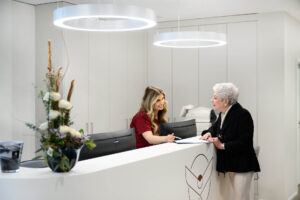
Early detection of glaucoma is crucial to prevent damage to the optic nerve and vision loss. Our practice offers you comprehensive diagnostics with state-of-the-art technology and individual advice.
In our practice, we offer you state-of-the-art diagnostics for early glaucoma detection. Key components include:
If glaucoma is diagnosed, various therapeutic approaches are available to lower intraocular pressure and prevent the progression of the disease:
The choice of therapy is made individually and in close coordination with you. Our goal is to protect your vision and maintain a high quality of life for you.
Why is glaucoma so dangerous?
Glaucoma often goes unnoticed for a long time and can lead to irreversible damage to the optic nerve. Regular examinations prevent serious consequences.
At what age should I get tested for glaucoma?
We recommend glaucoma screening from the age of 40, especially if you have a family history or other risk factors.
How long does a glaucoma examination take?
The examination is straightforward and usually takes 30-45 minutes, depending on the scope of the tests.
Is glaucoma curable?
No, glaucoma cannot be cured, but timely diagnosis and treatment can effectively control the progression of the disease.
Sehr geehrte Patientinnen und Patienten,
unsere Praxis ist in der Zeit vom 28.07.2025 bis einschliesslich 03.08.2025 geschlossen.
Ab dem 04.08.2025 sind wir wieder wie gewohnt für Sie da.
In dringenden Notfällen wenden Sie sich bitte an den ärztlichen Notdienst unter der Telefonnummer:
0800 33 66 55
Termine können Sie jederzeit online oder über unsere Website vereinbaren.
Wir danken Ihnen für Ihr Verständnis!
Ihr Praxisteam